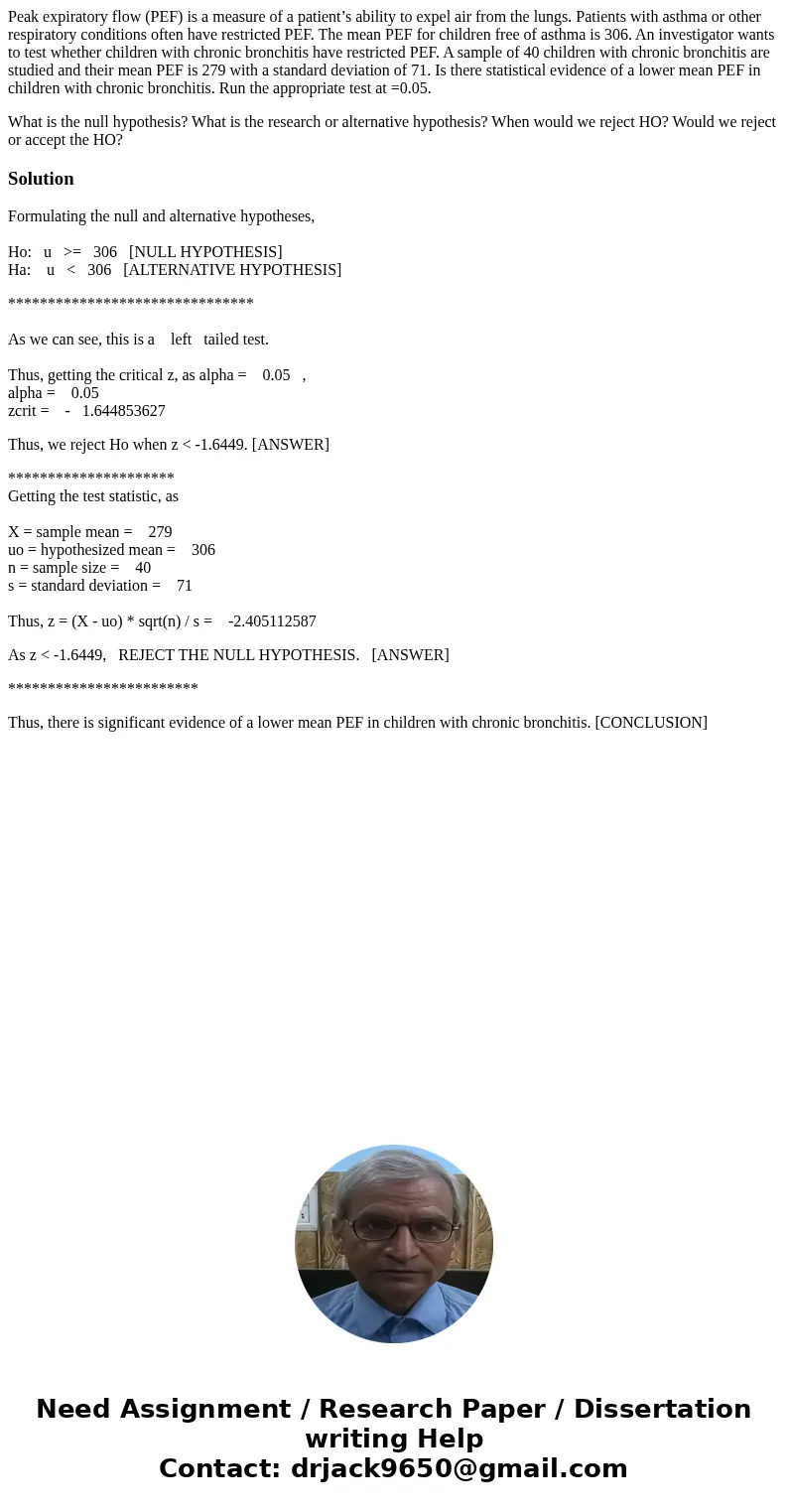Peak expiratory flow PEF is a measure of a patients ability
Peak expiratory flow (PEF) is a measure of a patient’s ability to expel air from the lungs. Patients with asthma or other respiratory conditions often have restricted PEF. The mean PEF for children free of asthma is 306. An investigator wants to test whether children with chronic bronchitis have restricted PEF. A sample of 40 children with chronic bronchitis are studied and their mean PEF is 279 with a standard deviation of 71. Is there statistical evidence of a lower mean PEF in children with chronic bronchitis. Run the appropriate test at =0.05.
What is the null hypothesis? What is the research or alternative hypothesis? When would we reject HO? Would we reject or accept the HO?
Solution
Formulating the null and alternative hypotheses,
Ho: u >= 306 [NULL HYPOTHESIS]
Ha: u < 306 [ALTERNATIVE HYPOTHESIS]
*******************************
As we can see, this is a left tailed test.
Thus, getting the critical z, as alpha = 0.05 ,
alpha = 0.05
zcrit = - 1.644853627
Thus, we reject Ho when z < -1.6449. [ANSWER]
*********************
Getting the test statistic, as
X = sample mean = 279
uo = hypothesized mean = 306
n = sample size = 40
s = standard deviation = 71
Thus, z = (X - uo) * sqrt(n) / s = -2.405112587
As z < -1.6449, REJECT THE NULL HYPOTHESIS. [ANSWER]
************************
Thus, there is significant evidence of a lower mean PEF in children with chronic bronchitis. [CONCLUSION]

 Homework Sourse
Homework Sourse